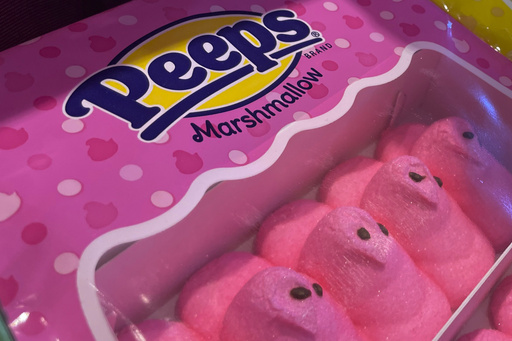NEW YORK — We’ve all experienced that moment when we see a dish and think, “Wow, that looks so appetizing — I want to taste it!” This reaction highlights that our food choices are influenced by more than just flavor; visual appearance plays a crucial role in what we decide to eat. This is especially true in American cuisine, where choices extend beyond basic colors to incorporate shades that nature could hardly conceive.
For over a century, American food manufacturers have utilized artificial dyes to enhance their products. This strategy not only aims to create a semblance of freshness and naturalness in mass-produced items but also to differentiate them in the market. Bright colors in candies and desserts, like the vibrant blue of a “blue raspberry Slurpee” or the shocking pink of “Flamin’ Hot Cheetos,” serve to captivate consumers’ attention.
The use of food dyes, however, hasn’t been without its controversies. Throughout the years, there have been significant discussions and regulations surrounding food coloring, culminating in the recent decision by the federal Food and Drug Administration to prohibit red dye No. 3 in food and oral medications due to cancer risk concerns. Yet, there is no movement advocating for less colorful food.
Devina Wadhera, a faculty associate at Arizona State University, emphasizes that the visual aspect of food is critical in influencing our choices. “If your eyes are open, your first sensory interaction is sight. That’s going to shape our initial judgment,” she states.
Importance of Visual Appeal
In the late 19th century, food manufacturers realized the significance of visual aesthetics as part of their marketing strategies. This focus was crucial for fostering brand recognition, instilling a sense of quality assurance, and alleviating concerns regarding spoilage, especially as the food industry transitioned to industrial production. Ai Hisano, the author of “Visualizing Taste: How Business Changed the Look of What You Eat,” explains that synthetic dyes addressed challenges like color loss during food processing and contributed to a more appealing, even “natural,” look.
Manufacturers also began to use colors strategically to appeal to younger audiences, despite occasional use of hazardous colorants, which has necessitated regulation. One representative example is the introduction of cake mixes in the mid-20th century, which simplified home baking. Companies promoted colorful icing to allow women to express their individuality while using these pre-mixed products.
Conditioned Reactions to Color
Wadhera points out that our associations between colors and foods are developed over time. “We create connections that signify meaning,” she mentions. For instance, cake is synonymous with birthdays, and ice cream often represents celebrations. Our perceptions of flavor can be influenced by color; spicy items might be packaged in colors like bright red, signaling a zesty experience.
Charles Spence, a professor of experimental psychology at the University of Oxford, adds that context can alter the associations we make. For example, a blue drink could be identified as refreshing mouthwash in one setting but could signify a bitter gin in a different environment. Cultural perspectives also vary; yet, it’s generally understood that more vivid colors lead to assumptions of stronger flavors.
These visual connections can even extend to how food is served. Wadhera highlights research suggesting people eat varying amounts of food based on the colors of their serving dishes, often without realizing it. “Many elements of color can influence our judgments without us being aware,” she notes. “We make quick assessments of food that occur subconsciously.”



